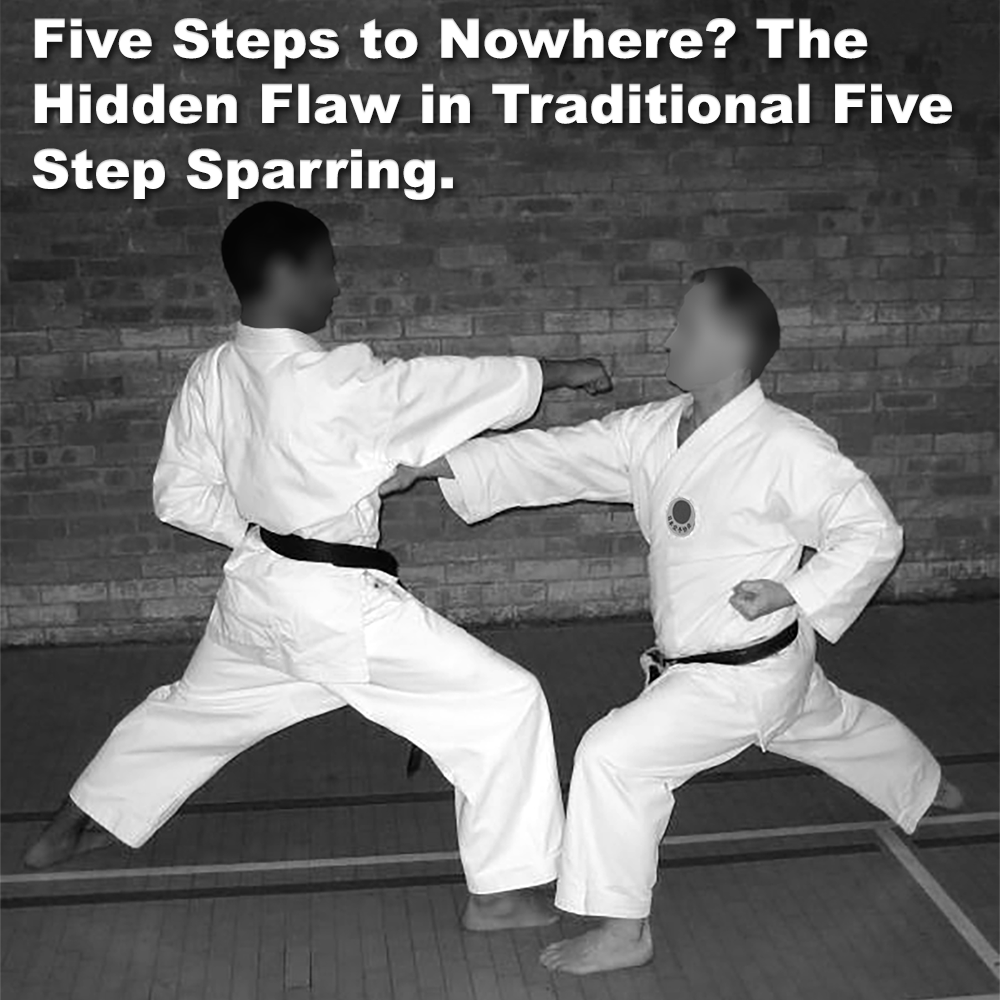
Five Steps to Nowhere? The Hidden Flaw in Traditional Five Step Sparring.
Posted by ADAM CARTER on APR 10, 2024

Five Steps to Nowhere? The Hidden Flaw in Traditional Five Step Sparring.
(2 minute 26 second read)
Punch, block, punch, block; moving backwards and forwards – prearranged step-sparring.
Learning the basics to become proficient requires repetition, over and over again. However, it’s crucial that basics are realistic, wouldn’t you agree?
The movements contained within karate were never meant to receive an attack from another martial artist – and this is one reason why many interpretations of applications are woefully ineffective.
Moving backwards and forwards blocking and punching, learning step-sparring practices by rote, is just not tactically sound.
Vince Morris, 9th dan, founder of Kissaki-Kai stated; “Always move to a position of advantage, and never go backwards in front of an enemy’s attack, except as a tactic! – We completely removed the mechanical mindless 5 step sparring which created this negative habit and made moving to a better position in the face of every attack an absolute rule.”
Those that advocate for step-sparring claim that practicing this way helps beginners become accustomed to defending against attacks, while also refining their understanding of distance and timing.
Wouldn’t stepping backwards place you at a disadvantage?
Helping beginners become accustomed to attacks and understanding distance and timing, can be achieved just as effectively by following the templates provided for us in the kata.
If we are to assume that kata is the basis of our karate, how many kata teach us to step backwards? Not many. Yet on the other hand, how many kata teach us to move to angle? Many of them.
By studying the movements in kata, we learn that moving off-angle during an attack gives you a significant advantage.
Isn’t it preferable to move to the side, out of the way of a direct attack? Moving to a position of advantage, off the attack line, it’s much safer and more tactically sound.
This raises a fundamental question: why continue to practice these techniques?
Tradition perhaps? Your style has always done it this way?
Practicing the basics by rote memory allows for the memorization of basic information, but it doesn’t put that information into any sort of context.
Yes, you must repeat the movements of karate over and over to gain any kind of proficiency, but if these repeated movements simply give the wrong information, then you are just repeating wrong information.
Moving backwards to block an attack is fundamentally flawed as it fails to adequately prepare practitioners for the chaotic nature of actual combat.
There are many alternative training approaches that could replace this ineffective method of training. Such as scenario-based simulations or drills with varying degrees of resistance, which in my opinion offer a much more practical and effective way to develop your skills.
Stepping backwards and trying to block an attack as your sole defense has major limitations. It restricts your movement, can cause you to lose balance, especially if your attacker is coming at you at speed, is bigger and stronger, and your block probably isn’t going to work anyway. It just doesn’t reflect the dynamic nature of real-world confrontations.
As the kata teaches us, you should never be moving backwards, you should always be moving towards the target, moving around, or laterally. Keep in mind that you don’t rise to the occasion, you default to your highest level of training.
“Be where your enemy is not.” – Sun Tzu
